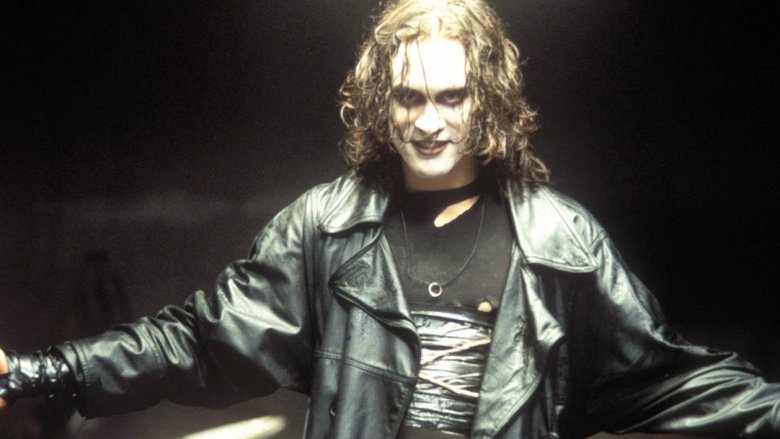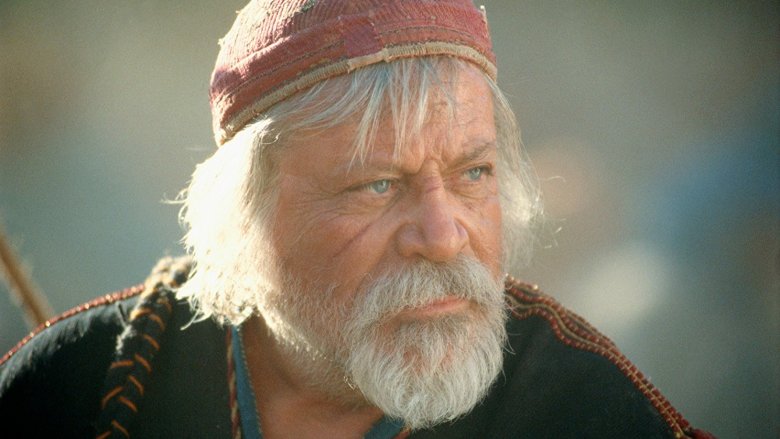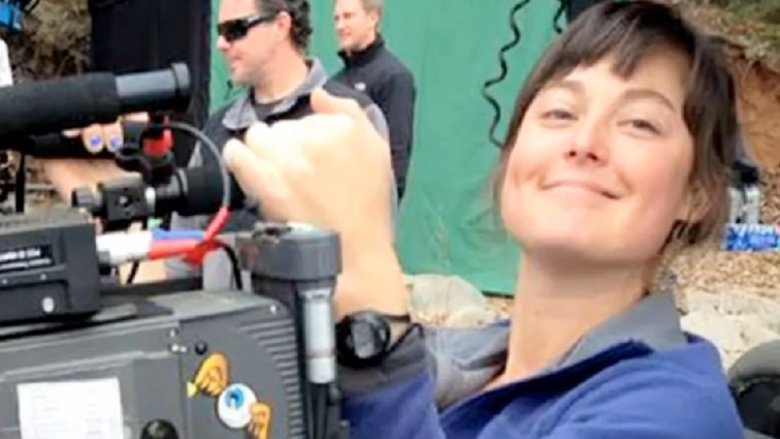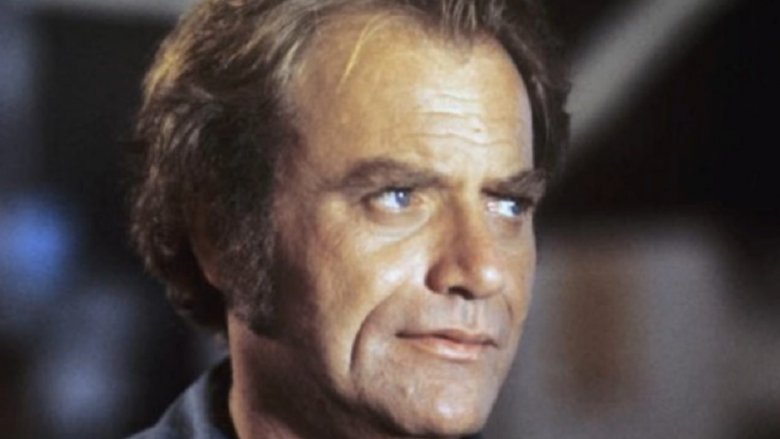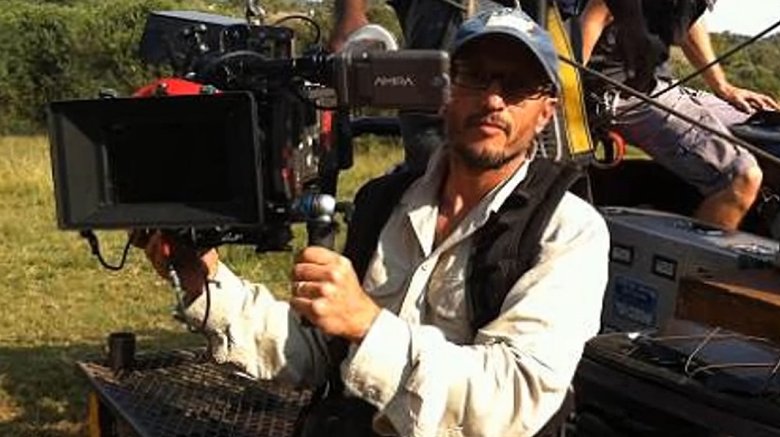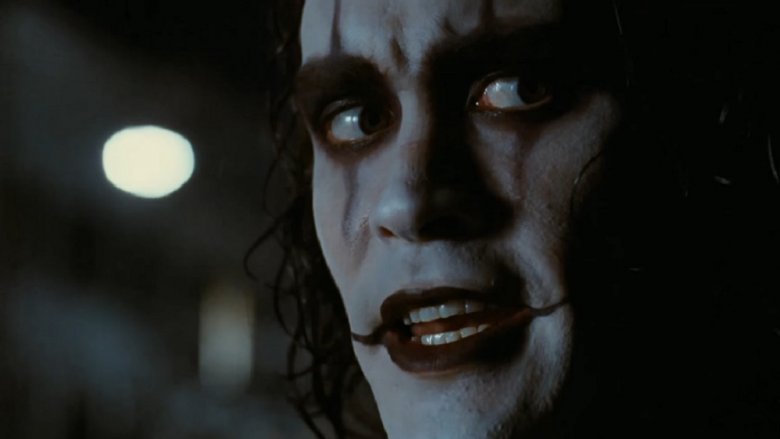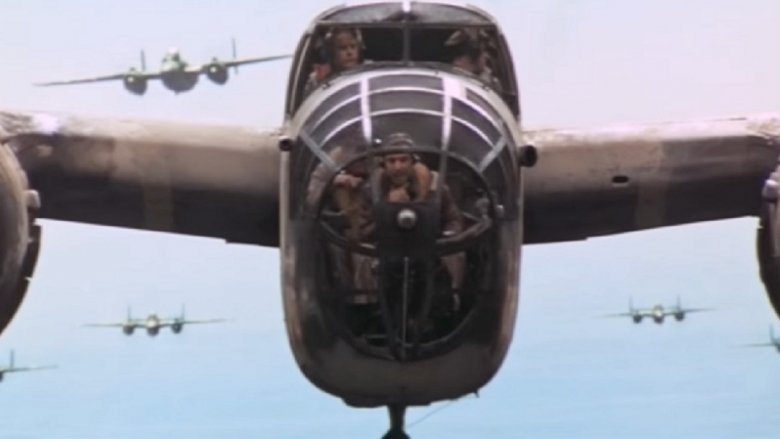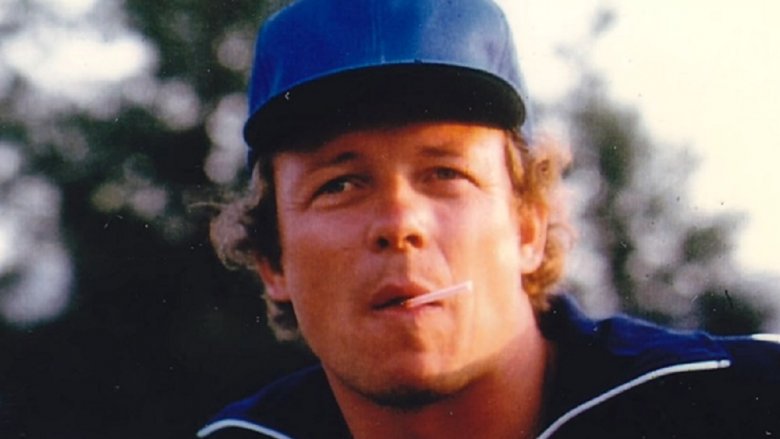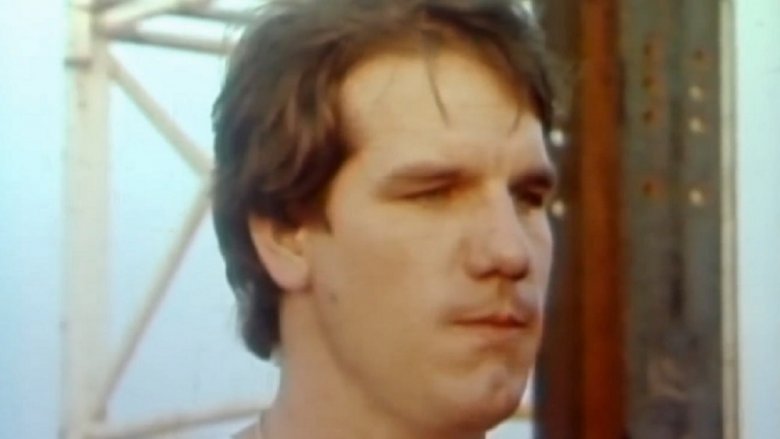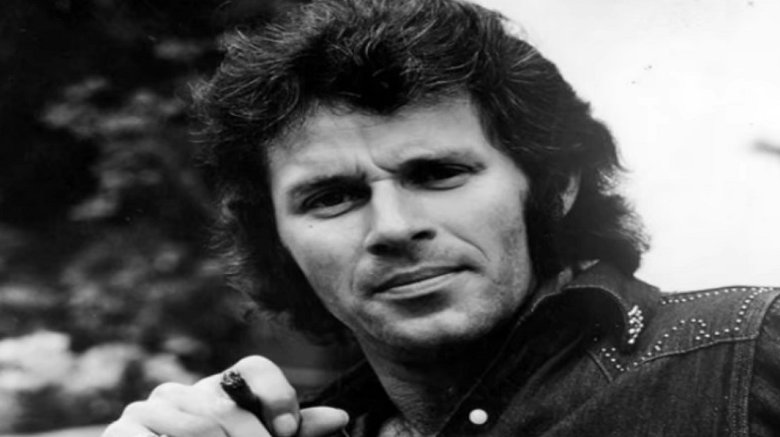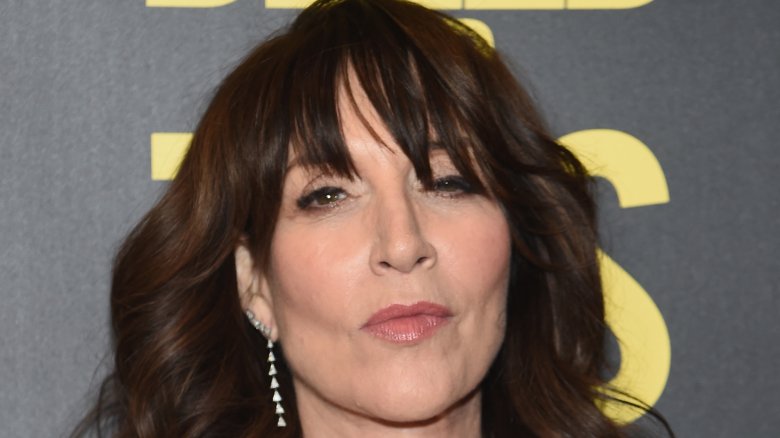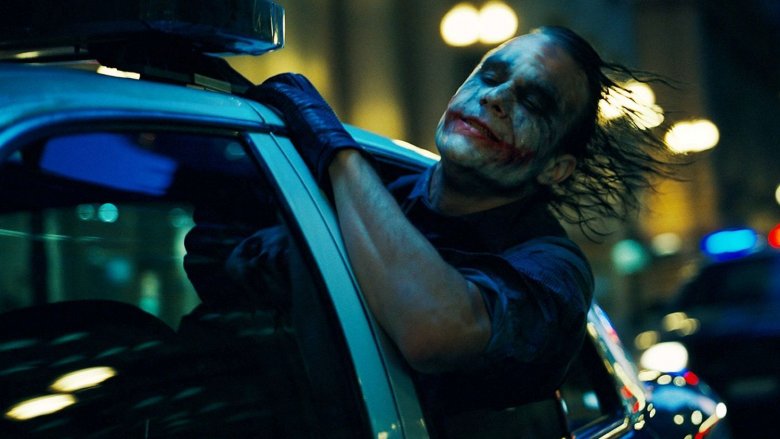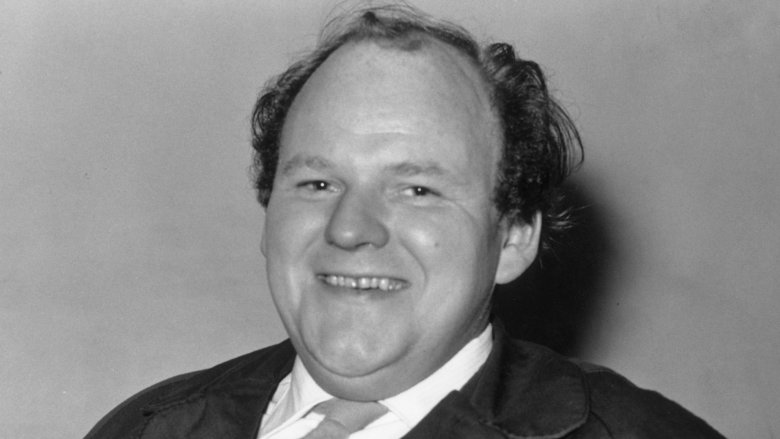The Most Bizarre Ways People Have Died While Filming A Movie
Despite all the rules and regulations in place to keep a cast and crew safe, it's well-known that movie sets can be dangerous places.Throughout cinema history, myriad accidents have befallen everyone from stunt performers to lead actors, due to causes ranging from gross negligence on the part of producers to — well, no good reason at all. Many films seem to have somehow had it in for the people making them, proving that all the regulations in the world sometimes aren't enough to prevent terrible mishaps or even tragedies from occurring.
But to paraphrase George Orwell, while most accidents are freakish, some are more freakish than others. The following actors, stunt workers, and crew members showed up for what they thought was just another day at work, only to lose their lives in some of the most bizarre ways one could imagine. Everyone involved in showbiz hopes to be a part of film history, but these unfortunate souls got a lot more than they bargained for.
Oliver Reed
Veteran actor Oliver Reed died before finishing all of his scenes for Ridley Scott's 2000 epic Gladiator, forcing Scott to engage in some digital trickery using outtakes to depict the death of Reed's character, gladiator handler Proximo. But the circumstances surrounding Reed's death serve to illustrate two things about the man: he was every bit as tough as his onscreen persona suggested, and he was a bit too fond of liquor for his own good.
The picture was shot on location in Malta, and on the night before he was to shoot his final scenes, Reed celebrated by dropping in on a local pub, where he put down eight pints of lager before moving on to a dozen double shots of rum and half a bottle of whiskey. Then he proceeded to take on a crew of British Navy sailors in an arm-wrestling contest, defeating them all before finally preparing to retire for the night. But after decades of such behavior, Reed's body had finally had enough; he suffered a massive heart attack, and dropped dead on the spot. The pub where he died — formerly known simply as "The Pub" — has since taken on the subtitle "Ollie's Last Pub," and fans the world over come through to browse its collection of memorabilia, have a pint or three, and pay tribute to one of the most legendary tough guys in film history.
Sarah Jones
In February 2014, a 20-person film crew showed up for work on the biopic Midnight Rider, the life story of rocker Gregg Allman. Director Randall Miller had them shoot scenes on an active train track, assuring them that it was in use only by two trains, both of which had already gone by. In the unlikely event that another train appeared, they were told they'd have only sixty seconds to clear the track — which ended up being not nearly enough time, as a third train made an unexpected appearance in the middle of the shoot.
The locomotive, traveling at a speed close to 60 miles per hour, struck a bed which had been affixed to the tracks, sending debris flying; one hairstylist suffered a compound fracture of her left arm, and five other crew members required medical attention. But 27-year old camera assistant Sarah Jones was somehow pushed into the path of the train, which struck and killed her instantly. Miller, who had developed a reputation for such "guerrilla-style" filmmaking, subsequently became the first filmmaker to be convicted on a criminal charge related to events on a film set. He pled guilty to involuntary manslaughter and was sentenced to two years in prison, with eight years of probation to follow, and Midnight Rider was canceled.
Vic Morrow
Veteran character actor Vic Morrow was cast as a bigot who gets a taste of his own medicine in the first segment of the 1983 anthology Twilight Zone: The Movie, and he lent a gravitas to the role which made the story's social message land as hard as anything dreamed up by Rod Serling (although the segment was the only one not to be adapted from an original episode). But the role would be Morrow's last — and the accident which ended his life and the lives of two others was among the more gruesome in film history.
In the scene, which was excised from the final film, Morrow's character tries to carry two children to safety through a Vietnamese swamp while a helicopter bombs their village. During a rehearsal take, the pyrotechnics buffeted pilot Dorcey Wingo's helicopter, scaring him senseless — but Landis insisted on shooting the scene as rehearsed, and Wingo didn't challenge him. As cameras rolled, the explosions forced Wingo to set his chopper down right in the middle of the set. One of its skids crushed 6-year old child actor Renee Chen, and Morrow and 7-year old Myca Dinh Lee were both decapitated by its main blade. The accident resulted in a Landis, Wingo and three others being put on trial for involuntary manslaughter, of which they were acquitted in 1987.
Carlos Carvalho
South African filmmaker Carlos Carvalho enjoyed early breakout success, having won an African Movie Academy Cinematography Award for the 2013 film The Forgotten Kingdom. But his disdain for authority might ultimately have been his undoing. While shooting at Glen Afric Country Lodge, he was killed in a freak mishap involving a giraffe that might never have happened had he stuck to authorized shooting areas.
While filming closeup shots of the giraffe, it suddenly became "inquisitive," which can be bad news when you're talking about a wild animal which stands a couple stories high. Lodge owner Richard Brooker told the Telegraph that the animal — whose name is Gerald — "spread its legs, bent its neck and swung its head at Carlos," headbutting him and sending him flying. Carvalho suffered serious head injuries upon landing, and died that night. A Lodge spokesperson stated that Carvalho had been warned not to approach the animal, saying, "He was unauthorized to film. He went off on his own. He wanted to get some shots to prove a point," adding that "Gerald was not to blame" and would not be put down.
Brandon Lee
The on-set accident that claimed the life of Brandon Lee, son of martial arts legend Bruce Lee, is among the more famous in Hollywood history — but it's the details leading up to the event that make it truly eerie. The elder Lee was convinced that his family carried an ancient curse in the form of a demon who would pursue its male members relentlessly, and the 1993 biopic Dragon: The Bruce Lee Story made use of this as a main plot point. One of its final scenes implies strongly that the curse would carry over to Brandon; unbelievably, it was only a year after that film's release that Brandon would meet his shocking demise.
Near the end of filming the gothic thriller The Crow, the crew were setting up to shoot a scene in which Lee's character Eric Draven is shot and killed. Of course, the scene called for a prop pistol to be used which fired blanks — regulations stated that no live ammunition was even to be allowed on set. The film's prop master, however, kept some in the trunk of his car, and decided to take a shortcut by modifying the live rounds when he discovered that no blanks were available. Unfortunately, a dummy round was loaded into the gun before the blank, and its lead tip became lodged in the barrel. The blank's discharge propelled the slug just like a real bullet, striking Lee in the abdomen; he was rushed to the hospital, but died on the operating table.
John Jordan
John Jordan was among the most fearless camera operators who ever lived, having developed his own perilous technique of getting the kind of aerial shots that simply shouldn't have been possible. Secured only by a harness, with his feet resting on the skid of a helicopter, he would lean out into the blue to secure his amazing shots; it was during the filming of one such aerial sequence for the James Bond film You Only Live Twice that he came a little too close to one of his subjects, a Bell 47 helicopter. One of its blades struck and almost removed his foot, which eventually had to be amputated. But Jordan was undeterred, and went right back to work doing what he did best — a gung-ho attitude which finally caught up with him in 1969 while shooting the adaptation of the war farce Catch-22.
Jordan was acting as second-unit director on the film, shooting from the open door of a B25 bomber. Once again, a passing aircraft got a little bit too close — but rather than making contact, it created a freak gust of wind that threw the B25 off to one side. Jordan lost his balance, got too close to the door, and was promptly sucked out. He plummeted 4,000 feet into the ocean, but at the very least, he died doing what he loved most — capturing spectacular aerial footage.
Dar Robinson
1987's Million Dollar Mystery was as much a gimmick as it was a film. Its cast of zany characters spent its entire runtime hunting down a series of three million-dollar cash stashes hidden somewhere in the United States, only for the ending to reveal that the third stash of hidden loot was totally real and challenging audiences to use clues from the film (and, in a bizarre tie-in, specially marked packages of Glad-Lock bags) to determine its location. The film was widely ignored when it wasn't being roundly panned, but its most unfortunate legacy lies in the accident that took the life of stuntman Dar Robinson.
Widely considered among his peers to be one of the gutsiest stunt workers alive, Robinson held a number of insane records — including the highest fall ever put on film — but had never suffered an on-set injury in his career. That changed in the most tragic fashion possible during the shooting of a routine motorcycle chase sequence, as Robinson went into a curve at a high rate of speed on his Honda 600 dirt bike, losing control and skidding off the road; he was separated from the bike, thrown down an embankment and impaled by a sagebrush branch. He was airlifted to a hospital, but died of his injuries; the film's stunt coordinator George Fisher subsequently issued a sobering reminder to stunt performers everywhere by observing that "it's always the easy ones that get you."
A.J. Bakunas
In 1978, residents of Lexington, Kentucky were thrilled to have a real Hollywood production — Steel, starring and produced by Kentucky native Lee Majors — in town. The film's climax called for its villain to plummet from a skyscraper to his death, and the city's Kincaid Towers (which were nearing completion) were just the ticket. The fall was performed by 27-year old A.J. Bakunas, who at one time held the record for the highest fall, and the scene had been completed with Bakunas jumping from the ninth story into an airbag. But then Bakunas got word that Dar Robinson had recently broken his record — causing him to insist on shooting the scene again, making the jump from the top of the 323-foot tower this time.
Dr. Judson Chalkley, the on-set physician, tried desperately to halt the attempt. "I told the producer, the director, I told A.J., I didn't think it was a good idea," he said. "We already had the movie in the can, so to speak." But Bakunas, intent on regaining his record, wouldn't change his mind. He performed the fall, and struck the airbag squarely in the prescribed area — only to have it rupture. Amazingly, despite having just fallen hundreds of feet essentially onto concrete, Bakunas initially clung to life. But his lungs had taken too much damage, and he died the next day.
Toby Halicki
While not a household name, director, actor and stunt driver Toby Halicki won himself a cult following in the 1970s by virtue of being preternaturally gifted at the art of filming car chases and crashes. His sophomore effort, 1974's Gone in 60 Seconds, is a prime example of this gift — but during the filming of its 1989 sequel, Halicki would meet his end in a bizarre accident that strangely had nothing to do with his insanely dangerous stunt work.
While filming in Tonawanda, New York, the crew was setting up to shoot the collapse of a water tower for a scene which Tonawanda officials had tried mightily to prevent. Halicki had been forced to take out an $8 million insurance policy in order to get them to relent, and had announced his plans to sue the city upon the film's completion — but as it turned out, he probably should have paid more attention to their concerns. The tower collapsed prematurely, causing an attached steel cable to snap; the cable then knocked over a nearby telephone pole, which fell directly on top of Halicki. He was treated by EMTs at the scene to no avail, and was pronounced dead on arrival at the local hospital. Halicki's widow Denice served as an executive producer on the hit 2000 remake of Gone in 60 Seconds as a means of preserving her husband's legacy.
Boris Sagal
Since 1980, no fewer than 33 TV and film workers have been killed in mishaps involving helicopters, and one such freak accident in 1981 took the life of veteran director Boris Sagal, whose daughter Katey has gone on to television stardom in series such as Married... With Children and Sons of Anarchy.
Sagal was in the middle of shooting scenes for the 1981 TV miniseries World War III at Oregon's Timberline Lodge (the same resort hotel used for exterior shots in Stanley Kubrick's The Shining) when disaster struck. After a day of shooting establishing scenes, Sagal and several crew members landed their helicopter in the lodge's parking lot, and had just disembarked when Sagal inexplicably backed into the chopper's rotor. The director suffered grave injuries to his head and shoulder, and despite being immediately airlifted to Portland's Emanuel Hospital for emergency surgery, he died five hours after the incident. Katey Sagal, who had previously lost her mother to heart disease, has opened up about the tragedy in recent years; in a 2008 New York Times interview, she said, "That was a dark period... I was kind of lost for several years," and revealed that she coped with the loss of her parents through songwriting.
Conway Wickliffe
Aside from being a stone cold classic among superhero films and featuring an all-time great performance in any genre, The Dark Knight featured some incredible stunt work in conjunction with spectacular — and sometimes dangerous — practical effects. Among the stunt performers and effects techs working on the film was Conway Wickliffe, a 41-year-old veteran of such tentpoles as Batman Begins, Children of Men and Casino Royale. While shooting a portion of the Tumbler/Batcycle chase sequence, Wickliffe was in the process of capturing a fairly standard shot, filming a stunt car while hanging out the window of an SUV, when tragedy struck. His vehicle's driver inexplicably veered off course, failing to follow his prescribed route and instead plowing through a grassy area — a detour which was unceremoniously ended by a tree.
Despite the fact that the SUV was only going about 20 miles per hour, Wickliffe sustained injuries serious enough that he was pronounced dead at the scene. His untimely demise was, unfortunately, a harbinger of things to come; star Heath Ledger, mere months after giving the performance of his career as the Joker, would die of an accidental drug overdose shortly before the film's release. The shocking deaths of both men were memorialized in The Dark Knight's closing credits, in simple and plaintive fashion: "In memory of our friends Heath Ledger and Conway Wickliffe."
Roy Kinnear
Veteran character actor Roy Kinnear was perhaps best known for playing the father of spoiled little girl Veruca Salt in the 1971 classic Willy Wonka and the Chocolate Factory, but his complete list of credits is longer than your arm. Among them: 1973's The Three Musketeers, a hit which helped launch the mainstream career of future Superman II director Richard Lester, who had helmed the Beatles-centric projects A Hard Day's Night and How I Won the War, and had previously made a splash with the musical comedy A Funny Thing Happened on the Way to the Forum, all of which Kinnear had appeared in. The actor played the relatively minor role of D'Artagnan's servant Planchet, but he returned to reunite with Lester once more for the 1989 sequel The Return of the Musketeers. It would be his final role.
Kinnear was injured in a fall from a horse during the shoot in Spain, and was subsequently admitted to a hospital in Madrid. His injuries weren't considered life-threatening, but were apparently too much for the actor's body; he suffered a heart attack the next day while still in the hospital, and doctors weren't able to save him. Kinnear's untimely death had a profound effect on the film's cast and crew, but none were so affected as Lester, who had lost a dear friend. The Return of the Musketeers was the last non-documentary film he ever made.
